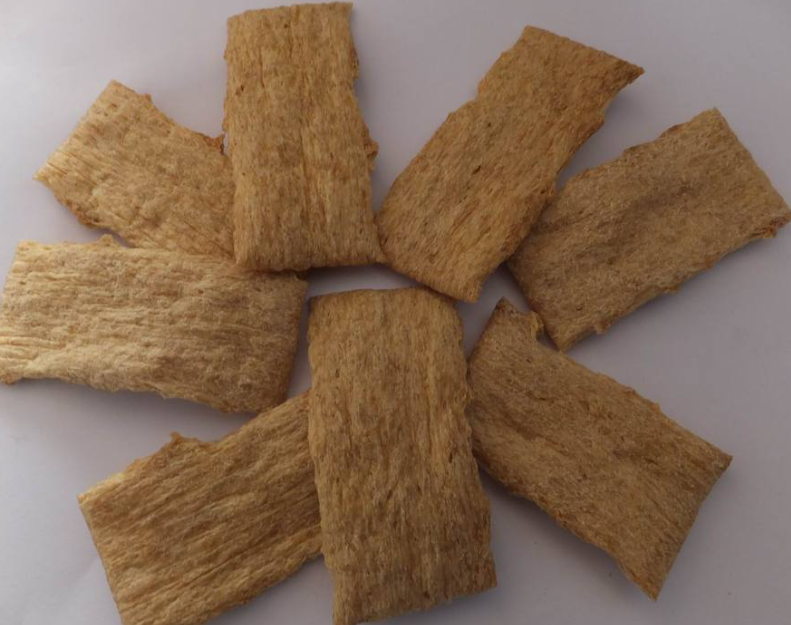A Guide to Producing Delicious Plant-Based Meat with Textured Vegetable Protein
The market for plant-based meat alternatives is rapidly expanding, driven by consumers seeking healthier, sustainable, and ethical protein sources. The heart of many successful products is Textured Vegetable Protein (TVP). Producing a delicious, meat-like TVP requires a careful balance of science, art, and technology. This guide outlines the key stages to achieve superior quality and taste.
1. Raw Material Selection: The Foundation of Flavor and Nutrition
The journey begins with choosing the right protein base. The most common sources are:
- Soy Protein Concentrate/Isolate: The industry standard due to its high protein content, neutral flavor, and excellent texturizing properties. Non-GMO and identity-preserved soy are often preferred for marketing and quality.
- Pea Protein Isolate: A rising star for its hypoallergenic nature (non-soy, non-gluten) and strong nutritional profile. It can sometimes have a stronger earthy or beany note that must be masked.
- Wheat Gluten (Vital Wheat Gluten): Often used in blends to provide a chewy, fibrous texture that mimics chicken or beef. It provides excellent elasticity and bite.
- Blends: Combining proteins (e.g., soy and pea, pea and wheat gluten) can optimize the nutritional profile, functionality, and cost.
Key Consideration: The protein content and quality are paramount. The raw material must have a high protein content (typically >60%) and excellent functionality for water and fat absorption.
2. The Extrusion Process: Creating the Meat-Like Texture
This is the most critical step where dry protein powder is transformed into a fibrous, meat-like structure. This is done using a high-moisture extrusion cooker (HMEC) or a twin-screw extruder.
- Mixing and Hydration: The protein powder is precisely mixed with water. The moisture content (often 40-60%) is crucial. It plasticizes the mix, allowing it to flow through the extruder.
- Thermomechanical Cooking: The hydrated mix is fed into the extruder. The screws shear and cook the mixture under high pressure and temperature (typically 140-180°C).
- The Die and Fibrous Structure: As the superheated, viscous mass exits the die, the sudden pressure drop causes water to flash into steam. This “puffs” the product and creates the layered, anisotropic (directionally dependent) fibrous structure that mimics animal muscle. The shape of the die determines the final form (e.g., chunks, strips, granules).
Key Parameters to Control:
- Moisture Content: Dictates texture (e.g., higher moisture can lead to a more tender, whole-muscle feel).
- Barrel Temperature Profile: Affects protein denaturation and cross-linking.
- Screw Speed and Configuration: Controls the shear and mechanical energy input, which defines the degree of texturization.
- Die Design and Temperature: Critical for final fiber formation and expansion.
3. Post-Processing: Enhancing Texture and Removing Off-Flavors
Freshly extruded TVP often requires further treatment to be its best.
- Steaming/Heating: Helps set the protein structure and can reduce unwanted volatile compounds.
- Drying: For products intended to be sold dry (to be rehydrated by the consumer), gentle drying is applied to achieve a stable shelf life without damaging the porous structure.
- De-flavoring/Washing: Some proteins, especially pea, can carry off-flavors (e.g., grassy, beany). A washing or steam-stripping step can significantly improve the final flavor profile by removing these compounds.
4. Flavoring, Coloring, and Marination: The Sensory Transformation
Plain TVP is a blank canvas. This stage is where it becomes “delicious” and meat-specific.
- Rehydration/Binding: Dry TVP is often rehydrated in a flavorful broth or marinade instead of plain water. This allows it to absorb taste from the inside out. Binders like methylcellulose or starches are often added to the marinade to improve cohesion and juiciness.
- Flavor Systems: A robust flavor system is built using:
- Savory Base: Yeast extracts, hydrolyzed vegetable protein, mushroom powder, and amino acids (like leucine) create a fundamental savory “umami” taste.
- Spice and Seasoning Blends: Tailored to mimic specific meats (e.g., chicken, beef, pork).
- Masking Agents: Used to cover any remaining off-notes from the base protein.
- Color: Beet juice, paprika extract, and other natural colors are added to replicate the raw and cooked appearance of meat. A touch of titanium dioxide can provide opacity.
5. Forming and Final Application
The final flavored and colored TVP mass can be processed into various formats:
- Grind: Used for applications like taco fillings, Bolognese sauce, or sausage.
- Patties/Burgers: Combined with binders, fats (like coconut or sunflower oil), and other ingredients, then formed and frozen.
- Chunks/Strips: For fajitas, stir-fries, or kebabs.
- Whole-Muscle Logs: Advanced HMEC can produce large logs that can be sliced into steaks or cutlets.
Conclusion: The Synergy of Science and Culinary Art
Producing delicious plant-based meat is a multi-disciplinary effort. It requires:
- Food Scientists to understand protein functionality and extrusion physics.
- Flavorists to create compelling and authentic taste profiles.
- Culinary Experts to ensure the final product performs well in cooking applications (browning, sizzling, mouthfeel).
Success lies in meticulously controlling each stage—from sourcing bland, high-quality protein to mastering the extrusion process and finally, applying a sophisticated flavor and color system. By doing so, manufacturers can create TVP products that are not just alternatives, but truly desirable and delicious foods in their own right.








